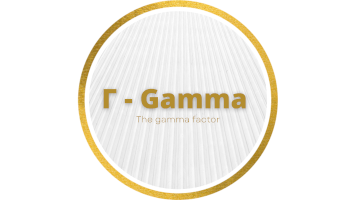
The Gamma effect: its all technical after all
You may not be interested in derivatives, but derivatives are interested in you. For the first time in history, in 2021 the notional value of the options traded in the US exchanges was higher than the value of the equities traded. This epitomizes a gargantuan shift of factors that affect price action, with equity options now rising to the top of the influence ladder.
Within the equity markets, the so called ‘options gamma’ is one of the most significant structural flows. Grab a cup of coffee, this is going to take a few minutes.
Market makers and the options market
Options are actually a form of insurance contract. They protect your portfolio when things turn ugly and provide some cushion when a major correction can wipe off years’ of hard-earned capital gains. The primary risk-management technique for the stock market insurers (so called ‘market-makers’, or ‘dealers’) to mitigate the investment risk from selling you those option insurance contracts is delta-hedging – which is exactly when option dealers start messing about in the stock market.
The options’ dealers participation in the stock market can be brutal. They enter the market like a bull in a china shop, with complete disregard of price and value. They have no respect for any technical analysis. No appreciation of fundamentals. No awareness of sector rotation. No understanding of valuation multiples. And on top of that – complete ignorance of the available liquidity. They come. They take what they need. And they leave.
Feedback loop and the reverse effect in stock prices
As asset managers, there isn’t much we can do apart from trying to understand how and when these options transactions impact the equity markets. At least that way, we’ll recognize when it happens, and we’ll be prepared. As the underlying stock moves, so does the delta-hedging requirement. Market makers are forced to trade the underlying simply due to the price of that asset changing and not for any other fundamental or economic reason. This creates a feedback loop, where the type and amount of options that investors trade influences the underlying price action. The amount of delta-hedging needed is mainly dependent on this thing called GAMMA.
Gamma
Gamma shows the potential amount of delta-hedging requirement by the market makers. It’s a source of one of the most significant structural flows in the equity markets for the past five years, and a factor that we at KM Cube predict will play a major role for the years going forward. These flows are non-discretionary. Dealers HAVE TO hedge; it is mandatory they stay with no directional risk by the close of the market. So these options transactions that come into the market will be traded REGARDLESS of the available liquidity or the trader’s opinion of the future of markets. Due to its nature, gamma can exacerbate market moves (“short gamma”) or dampen them (“long gamma”).
A quick rule of thumb: you are long gamma when you buy options and short gamma when you sell options.
When market-makers are long gamma, that means option dealers have net-net bought options. Their delta-hedging activity forces them to buy low and sell high.
They are sellers when the market rallies and buyers when it drops, very conveniently adding liquidity and reducing volatility.
When market-makers are short gamma, the opposite happens. Dealers’ positioning is short options, and they have to buy high and sell low. This exacerbates market moves and removes liquidity. Finding out net gamma positioning isn’t a trivial task as it involves figuring out the direction of options trades. However, an educated guess can help us approximate gamma exposure. On an index level, it is generally believed that investors predominantly buy puts for protection and sell calls as part of overwriting strategies. In the short gamma scenario, delta-hedging flows move in the same direction as the market, potentially amplifying the price action. As volatility rises, systematic/managed volatility funds tend to decrease market exposure, further adding to the selling pressure and provoking more negative gamma flows.
We suppose that for every practical purpose readers should just note that gamma denotes fluctuations of the amount necessary an option trader has to buy or sell in order to remain perfectly hedged. So, at the end of the day, it basically tells us how much more buying or selling will probably occur for every move higher/lower in the stock market’s price!
2022 in action
Gamma exposure for the past few weeks has been trading at negative levels, a fact that amplified the stocks’ move lower. We believe that as this is mitigated going into February it will result in mean-reverting action that should make markets less nervous and a January-like drawdown more unlikely.
All these are also evident from the different distribution of the S&P500 returns when gamma is either positive or negative. While negative gamma territory in January offered the conditions for frequent moves up to +/- 4%, a potential gamma recovery to positive territory will likely result in moves rather maximized at +/-2%.
A final word: Obviously options market-makers don’t act the way they do just to produce some pain to other investors. They have a good and solid reason to trade in the underlying stock market. In fact, they have no other choice. They do their best to perfectly hedge their assumed investment risk, and the residual exposure is hedged with underlying shares or futures. This process is structural and is here to stay for the years to come. Usually, the levels of maximum activity and open market interest are pinned and markets often revert towards those.
It is interesting to exhibit how maximum pain for February is at 4505 for the S&P500 and at KM Cube we are of the opinion that it will prove difficult for the market to experience extreme deviations from that level during this month.


